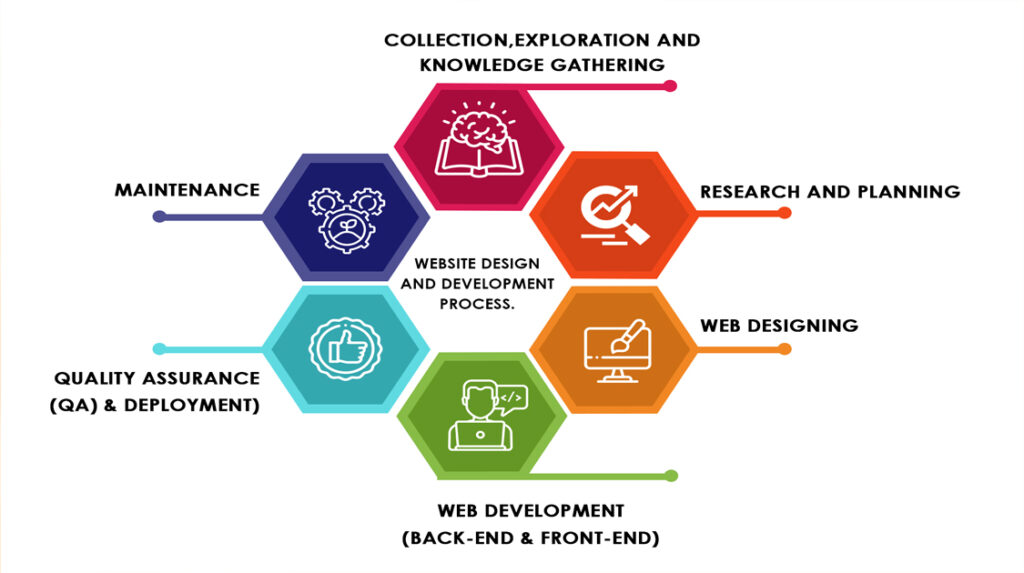
Website development refers to the process of creating a website from scratch or making significant updates and improvements to an existing website. It involves a combination of designing the website’s layout and user interface, coding the necessary functionalities, and integrating content and media elements.
Here are the key steps involved in website development:
- Planning and Requirement Gathering: Start by defining the purpose and goals of the website. Determine the target audience, key features and functionalities, and the overall scope of the project. Gather requirements and create a detailed plan to guide the development process.
- Design: Create the visual design and user interface (UI) for the website. This includes designing the layout, selecting color schemes, typography, and graphics, and creating wireframes or mockups to visualize the website’s structure and aesthetics.
- Front-End Development: Convert the design into a functional website using front-end development technologies such as HTML, CSS, and JavaScript. Write clean and well-structured code to build the user interface, implement navigation menus, interactive elements, and responsive design for different screen sizes and devices.
- Back-End Development: Develop the server-side functionality and databases that power the website. This involves choosing a suitable programming language (e.g., PHP, Python, Ruby), selecting a web framework (e.g., Laravel, Django, Ruby on Rails), and integrating with a database management system (e.g., MySQL, PostgreSQL). Implement user authentication, database management, form processing, and other dynamic features as per the project requirements.
- Content Creation and Integration: Create and integrate compelling content, including text, images, videos, and other media elements. Ensure proper formatting, optimize content for search engines, and implement content management systems (CMS) if needed to enable easy content updates and management.
- Testing and Quality Assurance: Thoroughly test the website to identify and fix any bugs, errors, or compatibility issues. Perform functional testing to ensure all features and functionalities work as intended. Test the website across different browsers, devices, and operating systems to ensure consistent performance.
- Deployment and Hosting: Choose a reliable web hosting provider and deploy the website to a live server. Set up domain name registration and configure DNS settings to make the website accessible to visitors. Configure security measures such as SSL certificates and implement backups and disaster recovery plans.
- Search Engine Optimization (SEO): Optimize the website for search engines by implementing SEO best practices. This includes proper meta tags, URL structure, keyword optimization, site speed optimization, and other on-page SEO techniques. Submit the website to search engines and set up analytics tools to track website traffic and performance.
- Maintenance and Updates: Regularly maintain and update the website to ensure its security, performance, and functionality. This includes monitoring for security vulnerabilities, applying software updates, and addressing any technical issues that may arise. Continuously review and improve the website based on user feedback and changing requirements.
- Ongoing Support: Provide ongoing support to website users, addressing inquiries, fixing issues, and providing updates as needed. Monitor website analytics, perform regular backups, and proactively optimize the website based on changing trends and user behavior.
Website development is a dynamic process that requires a combination of technical expertise, design skills, and an understanding of user needs and business objectives. It’s important to collaborate with web developers, designers, and content creators to ensure a successful website development project.